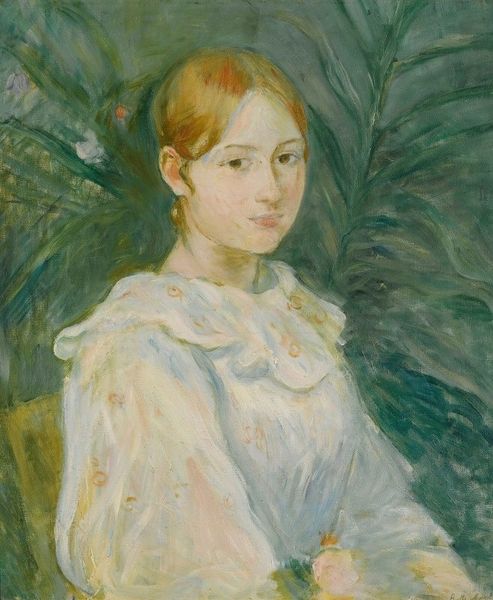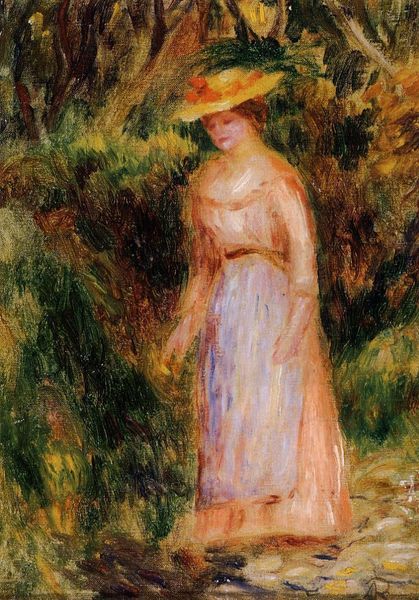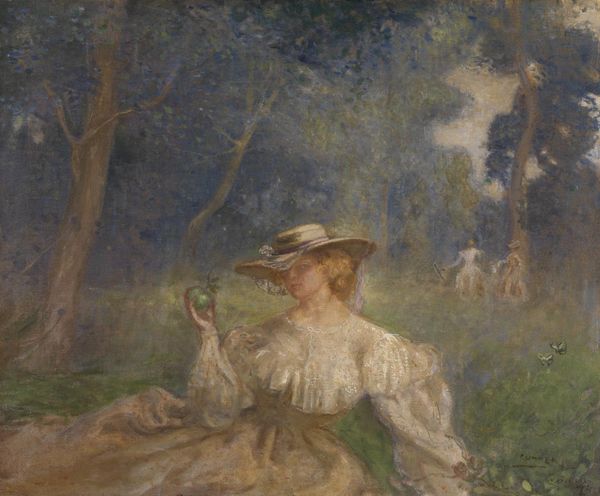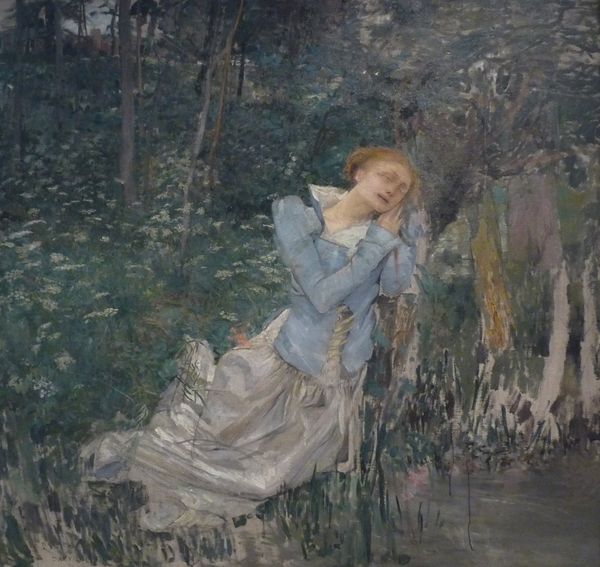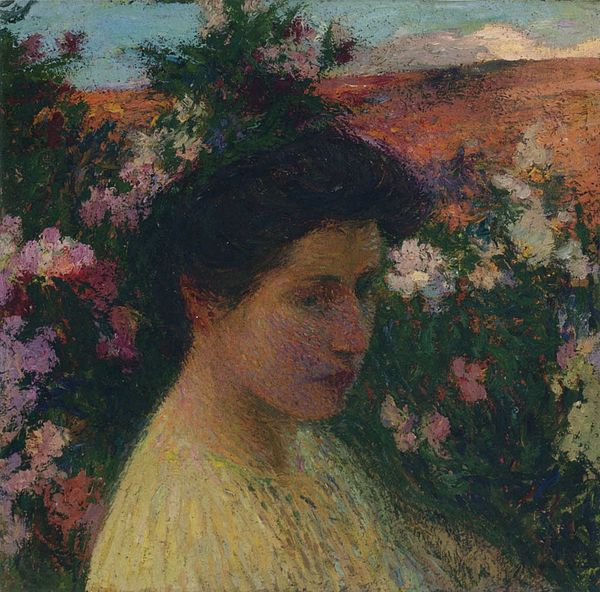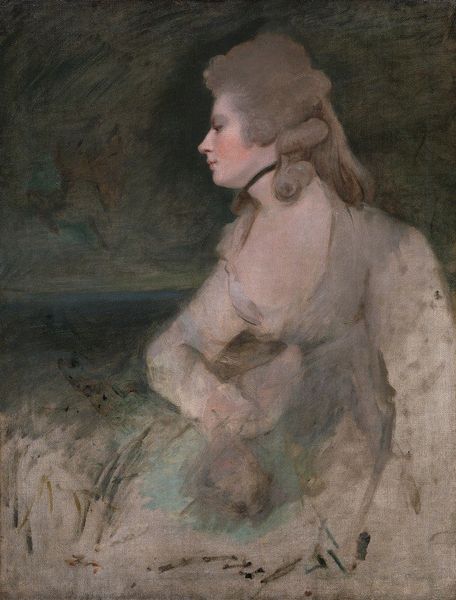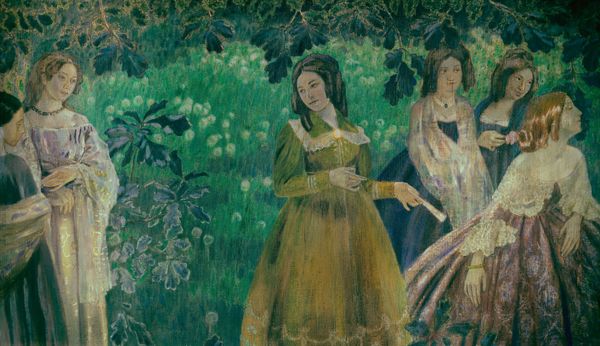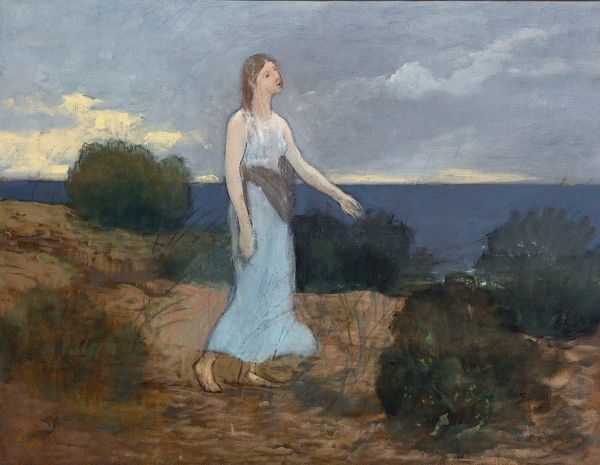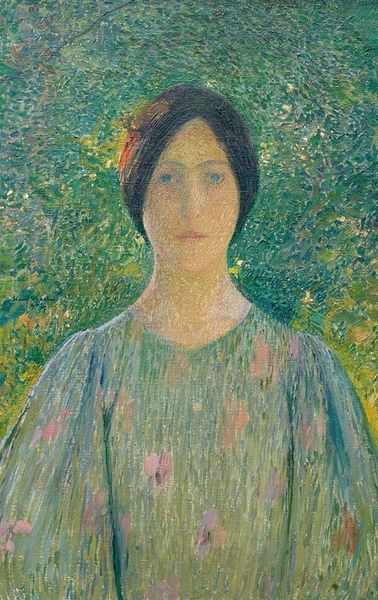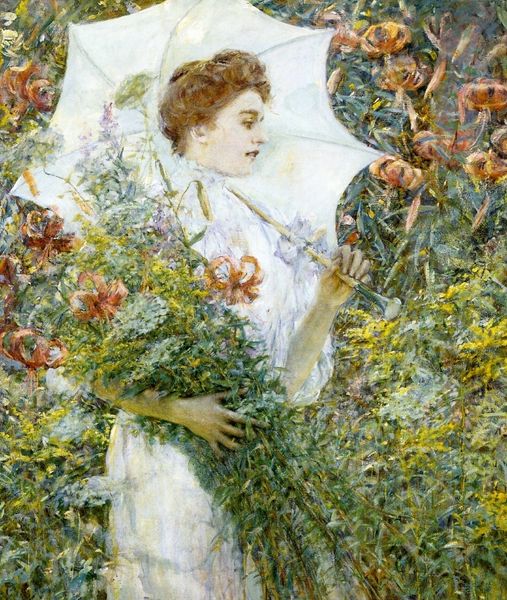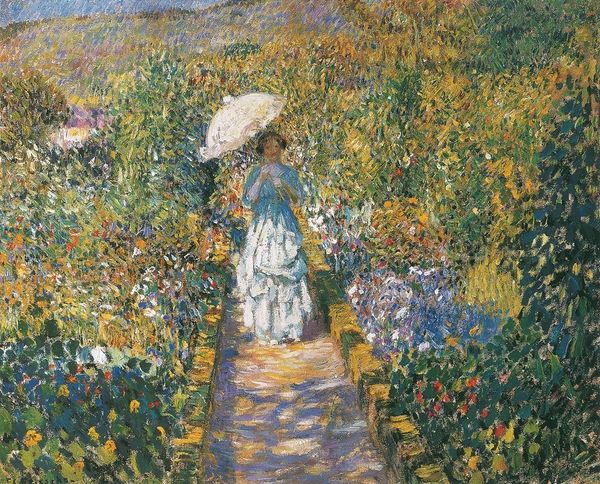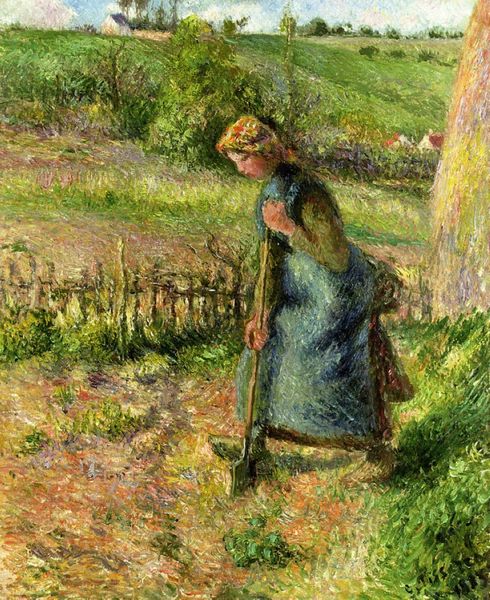
Copyright: Public Domain: Artvee
Editor: Edwin Austin Abbey’s “Woman in the Garden,” created in 1895 using pastel and watercolor, offers a very quiet scene. The woman almost seems to blend into the garden. I find myself wondering what she is thinking in this private moment. How do you see this work? Curator: It strikes me as a portrait caught between worlds, doesn’t it? Abbey pulls you in with that fleeting impression of a woman at one with nature. Almost as if we stumbled upon a figure in a dream. Notice how he captures light – not with meticulous detail, but rather like memory: a shimmering suggestion. Are we observing a real woman or an echo of idealized beauty? It feels like a romantic yearning. Editor: I see what you mean. The pastel medium definitely adds to the dreamlike quality, softening the edges. Why do you think he chose this approach? Curator: Perhaps he wasn’t interested in capturing reality as much as he was trying to evoke a feeling. A sense of nostalgia. Imagine stepping into a Monet, wouldn't you want to be dissolved in light and shadow? How might the title alter your perception? “Woman IN a Garden”… She’s become a part of it, absorbed. Editor: That’s beautiful. It makes me think about how art can blur the line between the person and their surroundings, creating a unified emotional space. I appreciate seeing this in the work. Curator: Precisely. It leaves a haunting echo, wouldn't you agree? Beauty is but an instant! We glimpse it. Remember it. The painting becomes a quiet poem that stays with us. Editor: It certainly will stay with me. It’s wonderful to think of art this way. Thank you.
Comments
No comments
Be the first to comment and join the conversation on the ultimate creative platform.
